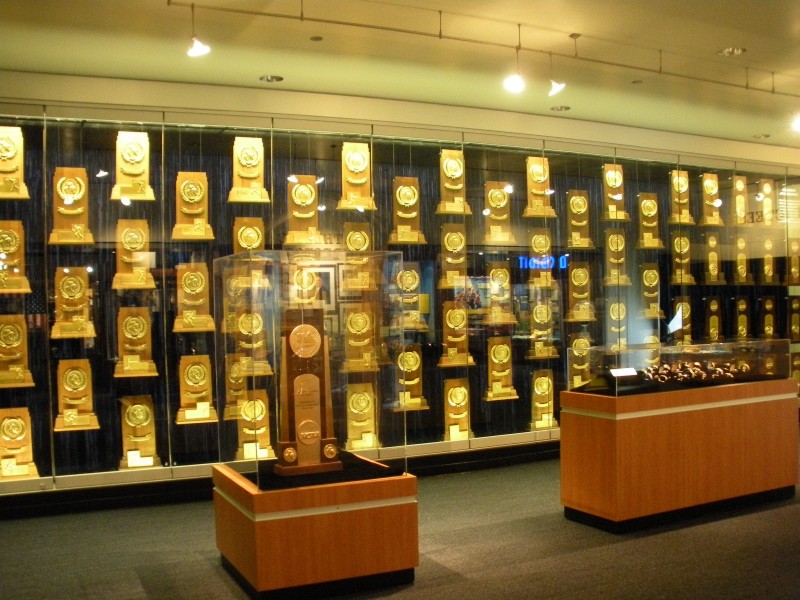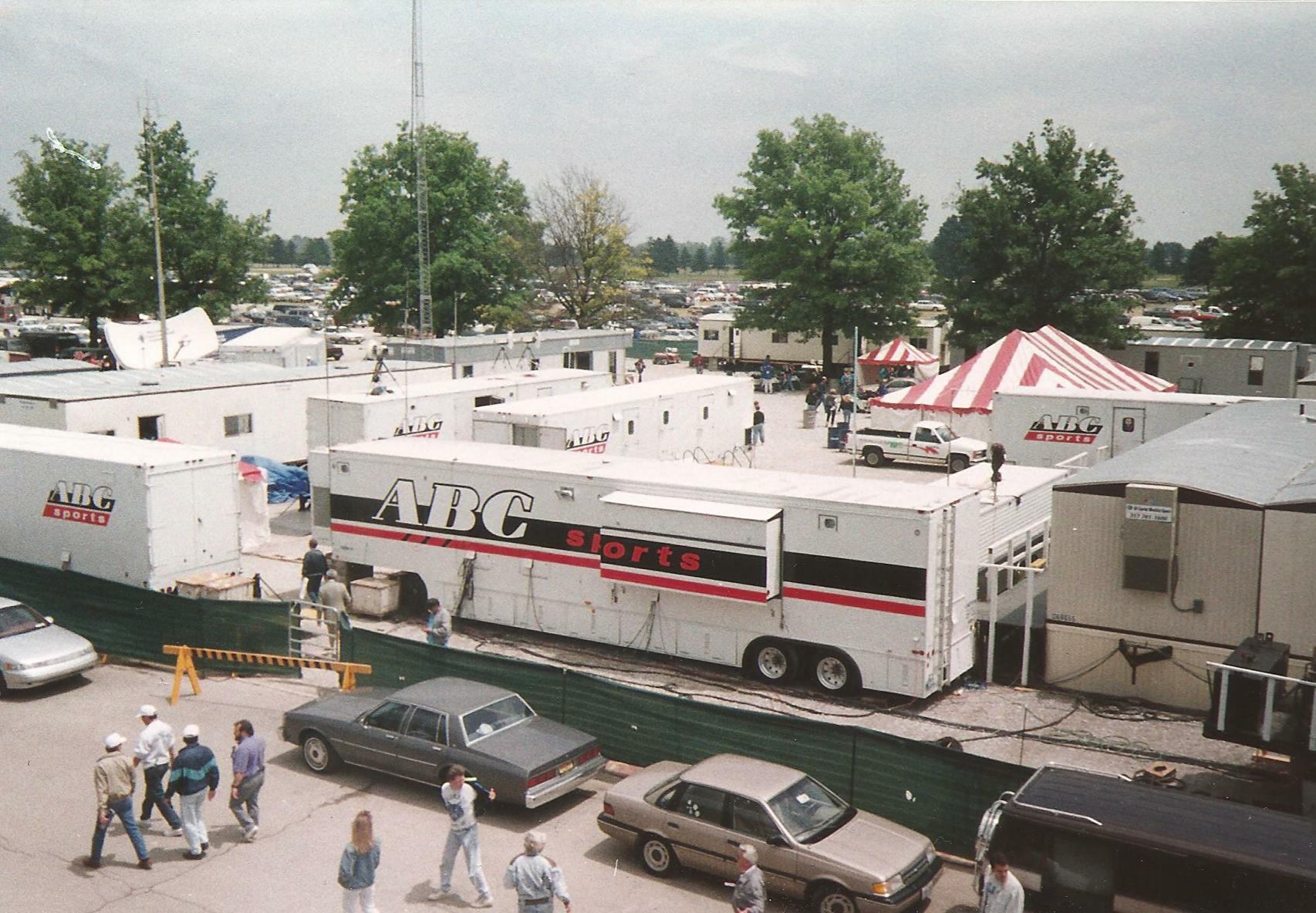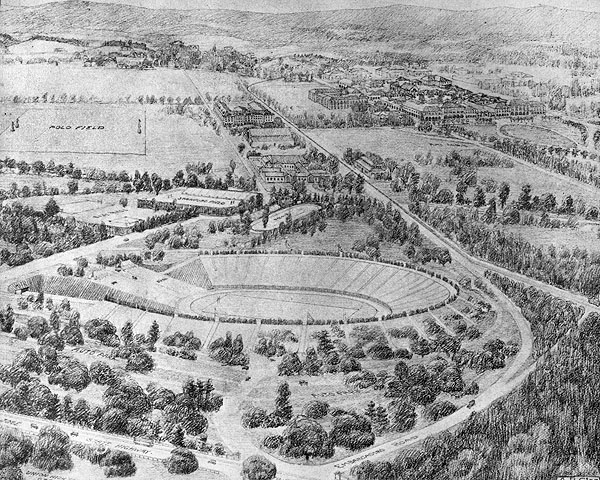|
1980 USC Trojans Football Team
The 1980 USC Trojans football team represented the University of Southern California (USC) in the 1980 NCAA Division I-A football season. In their fifth year under head coach John Robinson, the Trojans compiled an 8–2–1 record (4–2–1 against conference opponents), finished in third place in the Pacific-10 Conference (Pac-10), and outscored their opponents by a combined total of 265 to 134. Quarterback Gordon Adams led the team in passing, completing 104 of 179 passes for 1,237 yards with seven touchdowns and seven interceptions. Marcus Allen led the team in rushing with 354 carries for 1,563 yards and 14 touchdowns. Hoby Brenner led the team in receiving with 26 catches for 315 yards and no touchdowns. Schedule Personnel Game summaries Minnesota *Marcus Allen 42 rushes, 216 yards Arizona St *Marcus Allen 36 Rush, 133 Yds Oregon Washington *Marcus Allen 30 rushes, 216 yards Vs. UCLA Notre Dame Team players ... [...More Info...] [...Related Items...] OR: [Wikipedia] [Google] [Baidu] |
Pac-12 Conference
The Pac-12 Conference is a collegiate List of NCAA conferences, athletic conference, that operates in the Western United States, participating in 24 sports at the NCAA Division I level. Its College football, football teams compete in the NCAA Division I Football Bowl Subdivision, Football Bowl Subdivision (FBS; formerly Division I-A), the highest level of college football in the nation. The conference's 12 members are located in the states of Arizona, California, Colorado, Oregon, Utah, and Washington (state), Washington. They include each state's flagship public university, four additional public universities, and two private research universities. The modern Pac-12 conference formed after the disbanding of the Pacific Coast Conference (PCC), whose principal members founded the Athletic Association of Western Universities (AAWU) in 1959. The conference previously went by the names Big Five, Big Six, Pacific-8, and Pacific-10. The Pac-12 moniker was adopted in 2011 with the add ... [...More Info...] [...Related Items...] OR: [Wikipedia] [Google] [Baidu] |
1980 Arizona State Sun Devils Football Team
{{Collegefootball-1980s-season-stub ...
The 1980 Arizona State Sun Devils football team represented Arizona State University during the 1980 NCAA Division I-A football season. Schedule Roster Game summaries At Ohio State At Arizona References Arizona State Arizona State Sun Devils football seasons Arizona State Sun Devils football The Arizona State Sun Devils football team represents Arizona State University in the sport of American football. The Sun Devils team competes in the Football Bowl Subdivision (FBS) of the National Collegiate Athletic Association (NCAA) and the ... [...More Info...] [...Related Items...] OR: [Wikipedia] [Google] [Baidu] |
1980 Washington Huskies Football Team
The 1980 Washington Huskies football team was an American football team that represented the University of Washington during the 1980 NCAA Division I-A football season. In its sixth season under head coach Don James, the team compiled a in the regular season and were Pacific-10 Conference champions They returned to the Rose Bowl, but fell to favored for the season Washington outscored its opponents Both regular season losses were at home at Husky Stadium. The sole conference loss was to border rival who last defeated the Huskies in 1973; it was the first loss for James against a Northwest team. In his eighteen games against the Ducks, James lost only three; the other two were in 1987 and 1988. The Huskies' winning streak over Washington State in the Apple Cup reached seven with another win it has not been held there since. Senior quarterback was selected as the team's most valuable player; Flick, Ken Gardner, Rusty Olsen, and Randy Van Divier were the Schedule ... [...More Info...] [...Related Items...] OR: [Wikipedia] [Google] [Baidu] |
ESPN On ABC
ESPN on ABC (formerly known as ABC Sports from 1961 to 2006) is the branding used for sports event and documentary programming televised by the American Broadcasting Company (ABC) in the United States. Officially, the broadcast network retains its own sports division; however, in 2006, ABC's sports division was merged into ESPN Inc., which is the parent subsidiary of the cable sports network ESPN that is majority owned by ABC's corporate parent, The Walt Disney Company, in partnership with Hearst Communications. ABC broadcasts use ESPN's production and announcing staff, and incorporate elements such as ESPN-branded on-screen graphics, '' SportsCenter'' in-game updates, and the BottomLine ticker. The ABC logo is still used for identification purposes such as a digital on-screen graphic during sports broadcasts on the network, and in promotions to disambiguate events airing the broadcast network from those shown on the ESPN cable channel. The broadcast network's sports event c ... [...More Info...] [...Related Items...] OR: [Wikipedia] [Google] [Baidu] |
Stanford, California
Stanford is a census-designated place (CDP) in the northwest corner of Santa Clara County, California, United States. It is the home of Stanford University. The population was 21,150 at the United States Census, 2020, 2020 census. Stanford is an unincorporated area of Santa Clara County and is adjacent to the city of Palo Alto, California, Palo Alto. The place is named after Stanford University. Most of the Stanford University campus and other core University owned land is situated within the census-designated place of Stanford though the Stanford University Medical Center, the Stanford Shopping Center, and the Stanford Research Park are officially part of the city of Palo Alto. Its resident population consists of the inhabitants of on-campus housing, including graduate student residences and single-family homes and condominiums owned by their faculty inhabitants but located on leased Stanford land. A Neighbourhood, residential neighborhood adjacent to the Stanford campus, Co ... [...More Info...] [...Related Items...] OR: [Wikipedia] [Google] [Baidu] |
Stanford Stadium
Stanford Stadium is an outdoor college football stadium on the west coast of the United States, located on the campus of Stanford University in Stanford, California. It is the home of the Stanford Cardinal and hosts the university's commencement exercises. Opened in 1921 as a football and track and field stadium, it was an earthen horseshoe with wooden bleacher seating and flooring upon a steel frame. Its original seating capacity was 60,000, which grew to 89,000 by 1927 as a nearly enclosed bowl. Immediately following the 2005 season, the stadium was demolished and rebuilt as a dual-deck concrete structure, without a track. Today, it seats 50,424. The natural grass playing field runs northwest to southeast, at an approximate elevation of above sea level. Early history Stanford Stadium was built in five months in 1921 and opened its gates on November 19, replacing Stanford Field. The first game was against rival California, who defeated Stanford 42–7 in the Big Game. S ... [...More Info...] [...Related Items...] OR: [Wikipedia] [Google] [Baidu] |
Stanford–USC Football Rivalry
The Stanford–USC football rivalry is an American college football rivalry between the Stanford Cardinal and the USC Trojans, both members of the Pac-12 Conference and the only private schools in the conference. The two teams first played in 1905 and have met nearly every year since 1919 (missing only 1921, 1924, and the World War II years 1943–1945), frequently vying for the conference championship and a berth in the Rose Bowl. Stanford is USC's oldest current rival. Series history Early rivalry The rivalry began in earnest in the 1930s after USC had won three national championships in five years. A group of Stanford freshmen, after a stinging 1932 loss to an undefeated USC team, promised never to lose to USC again. The "Vow Boys" made good on their promise, winning their next three games against the Trojans, beginning with the 1933 win that broke USC's 27-game undefeated streak. Notable games and incidents For most of its history, USC dominated the series, and overall ... [...More Info...] [...Related Items...] OR: [Wikipedia] [Google] [Baidu] |
1980 Stanford Cardinals Football Team
The 1980 Stanford Cardinals football team represented Stanford University in the Pacific-10 Conference during the 1980 NCAA Division I-A football season. Following the surprise resignation of Rod Dowhower after one season in January, Stanford's new head coach was alumnus Paul Wiggin, and he led the Cardinals to a 6–5 record (3–4 in Pac-10, tied for sixth). Home games were played on campus at Stanford Stadium in Stanford, California. Hired in February, Wiggin was a former star defensive end at Stanford ( All-Pacific Coast in 1955, 1956), played eleven years in the NFL, was a head coach for three seasons with the Kansas City Chiefs (1975– 77), and most recently was the defensive coordinator of the New Orleans Saints. After the season in December, offensive coordinator Dennis Green became the head coach at Northwestern in the Big Ten Conference, and receivers/backs coach Jim Fassel was promoted. Green returned to Stanford as head coach in 1989. Schedule : Roster ... [...More Info...] [...Related Items...] OR: [Wikipedia] [Google] [Baidu] |
1980 California Golden Bears Football Team
{{California-sport-team-stub ...
The 1980 California Golden Bears football team was an American football team that represented the University of California, Berkeley during the 1980 NCAA Division I-A football season. Under head coach Roger Theder, the team compiled an overall record of 3–8 and 3–5 in conference. Schedule Personnel Season summary Stanford Cal made a goal-line stand with 1:07 remaining to preserve the victory. References California California Golden Bears football seasons California Golden Bears football The California Golden Bears football program represents the University of California, Berkeley in college football as a member of the Pac-12 Conference at the NCAA Division I, NCAA Division I FBS level. The team plays its home games at Californi ... [...More Info...] [...Related Items...] OR: [Wikipedia] [Google] [Baidu] |
Eugene, Oregon
Eugene ( ) is a city in the U.S. state of Oregon. It is located at the southern end of the Willamette Valley, near the confluence of the McKenzie and Willamette rivers, about east of the Oregon Coast. As of the 2020 United States Census, Eugene had a population of 176,654 and covers city area of 44.21 sq mi (114.50 sq km). Eugene is the seat of Lane County and the state's second largest city after Portland. The Eugene-Springfield metropolitan statistical area is the 146th largest in the United States and the third largest in the state, behind those of Portland and Salem. In 2022, Eugene's population was estimated to have reached 179,887. Eugene is home to the University of Oregon, Bushnell University, and Lane Community College. The city is noted for its natural environment, recreational opportunities (especially bicycling, running/jogging, rafting, and kayaking), and focus on the arts, along with its history of civil unrest, protests, and green activism. Eugene's offi ... [...More Info...] [...Related Items...] OR: [Wikipedia] [Google] [Baidu] |
Autzen Stadium
Autzen Stadium is an outdoor American football, football stadium in the Pacific Northwest, northwest United States, in Eugene, Oregon. Located north of the University of Oregon campus, it is the home field of the Oregon Ducks football, Oregon Ducks of the Pac-12 Conference. Opened in 1967, the stadium has undergone several expansions. The official seating capacity is presently 54,000, however, the actual attendance regularly exceeds that figure. History Prior to 1967, the Ducks' on-campus stadium was Hayward Field, which they shared with the track and field team. However, by the late 1950s, it had become apparent that Hayward Field was no longer suitable for the football team. It seated only 22,500 people, making it one of the smallest in the University Division (now NCAA Division I, Division I), and only 9,000 seats were available to the general public. While nearly every seat was protected from the elements, it had little else going for it. The stadium was in such poor condit ... [...More Info...] [...Related Items...] OR: [Wikipedia] [Google] [Baidu] |
1980 Oregon Ducks Football Team
The 1980 Oregon Ducks football team represented the University of Oregon in the 1980 NCAA Division I-A football season. Playing as a member of the Pacific-10 Conference (Pac-10), the team was led by head coach Rich Brooks, in his fourth year, and played their home games at Autzen Stadium in Eugene, Oregon. They finished the season with a record of six wins, three losses and two ties overall, in In their rivalry game with Washington, the Ducks won in Seattle for the first time in 12 years; the win also broke a six-game losing streak to the Huskies. Oregon defeated all three northwest teams in the Pac-10, their first sweep in 26 years. After the season in December, Brooks' contract was extended through the 1984 season with a salary increase, from under $37,000 to over $46,000. Schedule Roster NFL Draft Two Ducks were selected in the 1981 NFL Draft, which lasted 12 rounds (332 selections). References {{Oregon Ducks football navbox Oregon Oregon Ducks football s ... [...More Info...] [...Related Items...] OR: [Wikipedia] [Google] [Baidu] |




